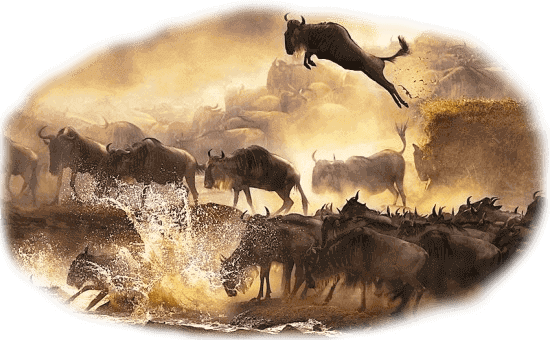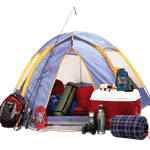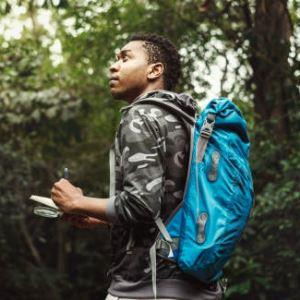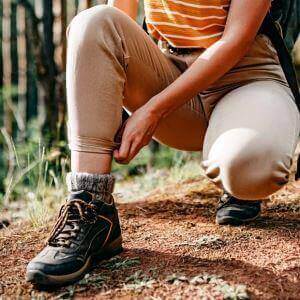 Kenya remains one of the most photogenic destinations in Africa, attracting a growing number of Indian wildlife photographers. From golden savannahs to alpine lakes, its diverse ecosystems offer Indian tourists a rare opportunity to capture the wild in vivid clarity. For those passionate about nature and photography, selecting the right location is critical. Maasai Mara National Reserve is the first stop for many Indian photographers. The sheer abundance of wildlife and the annual Great Migration provide unmatched drama and spectacle. Lions, cheetahs, and wildebeest dot the plains, offering moment after moment of compelling visual storytelling. Early morning and dusk bring soft light that flatters every frame. Moving south, Amboseli National Park delivers classic African imagery elephants ambling in front of snow-capped Mount Kilimanjaro. This backdrop alone makes it a favorite among Indian travelers. Here, patient photographers are rewarded with compositions that blend wildlife, light, and landscape in perfect harmony. To the north lies Samburu National Reserve, where rarities like the Grevy's zebra, gerenuk, and Somali ostrich await. Its dry, rugged terrain differs dramatically from Kenya's southern parks, allowing Indian photographers to broaden their portfolios with unique species and scenery. Fewer tourists mean fewer disruptions ideal for those aiming for precision and calm. For bird photography, Lake Nakuru stands unrivaled. Indian photographers flock to this Rift Valley lake to capture pink halos of flamingos and dramatic views from Baboon Cliff. Raptors and pelicans add variety to every session, while panoramic vantage points help encapsulate the lake’s dynamic environment. Photographers interested in conservation stories find inspiration at Ol Pejeta Conservancy. Home to endangered rhinos and thriving predator populations, the reserve is structured to balance tourism with protection. Indian tourists looking for depth and narrative in their images will find Ol Pejeta a rich source. Kenya’s reserves are accessible and well-supported, making it easy for Indian travelers to embark on an affordable, logistically sound photographic safari. Whether you’re seeking rare species, dramatic light, or serene landscapes, Kenya offers the space and story to elevate your photography. With the right timing, gear, and support such as the expertise of Homejoy Safari Adventures each visit transforms into a gallery of unforgettable moments.
Kenya remains one of the most photogenic destinations in Africa, attracting a growing number of Indian wildlife photographers. From golden savannahs to alpine lakes, its diverse ecosystems offer Indian tourists a rare opportunity to capture the wild in vivid clarity. For those passionate about nature and photography, selecting the right location is critical. Maasai Mara National Reserve is the first stop for many Indian photographers. The sheer abundance of wildlife and the annual Great Migration provide unmatched drama and spectacle. Lions, cheetahs, and wildebeest dot the plains, offering moment after moment of compelling visual storytelling. Early morning and dusk bring soft light that flatters every frame. Moving south, Amboseli National Park delivers classic African imagery elephants ambling in front of snow-capped Mount Kilimanjaro. This backdrop alone makes it a favorite among Indian travelers. Here, patient photographers are rewarded with compositions that blend wildlife, light, and landscape in perfect harmony. To the north lies Samburu National Reserve, where rarities like the Grevy's zebra, gerenuk, and Somali ostrich await. Its dry, rugged terrain differs dramatically from Kenya's southern parks, allowing Indian photographers to broaden their portfolios with unique species and scenery. Fewer tourists mean fewer disruptions ideal for those aiming for precision and calm. For bird photography, Lake Nakuru stands unrivaled. Indian photographers flock to this Rift Valley lake to capture pink halos of flamingos and dramatic views from Baboon Cliff. Raptors and pelicans add variety to every session, while panoramic vantage points help encapsulate the lake’s dynamic environment. Photographers interested in conservation stories find inspiration at Ol Pejeta Conservancy. Home to endangered rhinos and thriving predator populations, the reserve is structured to balance tourism with protection. Indian tourists looking for depth and narrative in their images will find Ol Pejeta a rich source. Kenya’s reserves are accessible and well-supported, making it easy for Indian travelers to embark on an affordable, logistically sound photographic safari. Whether you’re seeking rare species, dramatic light, or serene landscapes, Kenya offers the space and story to elevate your photography. With the right timing, gear, and support such as the expertise of Homejoy Safari Adventures each visit transforms into a gallery of unforgettable moments.
Kenya Safari Photography Essentials Table for Indian Tourists
| Category | Recommendation |
|---|---|
| Camera Type | DSLR or mirrorless with interchangeable lenses |
| Lens Range | 24–70mm for landscapes; 100–400mm or 200–600mm for wildlife |
| Ideal Safari Parks | Maasai Mara, Amboseli, Samburu, Lake Nakuru, Tsavo East & West |
| Packing Tips | Breathable clothes, hat, sunglasses, fleece, power bank |
| Travel Season | July–October (peak), April–June (affordable, green season) |
| Tour Operators | Homejoy Safari Adventures (custom photography tours) |
| Health Essentials | Anti-malarials, SPF 30+ sunscreen, personal medication |
| Photography Accessories | Beanbag/monopod, lens wipes, extra memory cards |
| Top Wildlife Species | Lions, leopards, elephants, rhinos, buffalo, flamingos, eagles, giraffes |
| Visa and Entry | E-visa for Indian nationals, valid passport for at least 6 months |
Why Visit the Best Safari Parks in Kenya for Indian Wildlife Photographers
Kenya’s rich tapestry of landscapes and wildlife has long made it a favorite among international photographers, but Indian wildlife enthusiasts are increasingly discovering its potential. The appeal lies in Kenya’s unparalleled access to iconic species, diverse habitats, and consistent lighting conditions ideal for photography. For Indian travelers seeking striking visuals and an immersive wilderness experience, Kenya’s safari parks are not just destinations they are expansive canvases. One of the top reasons Indian photographers choose Kenya is the sheer density of wildlife. In parks like Maasai Mara and Amboseli, animals roam freely in large numbers, providing constant photo opportunities without long waits. Capturing a lion pride at dawn or a herd of elephants crossing a dusty track becomes more than a possibility it becomes a daily highlight. These conditions cater perfectly to photographers who travel from afar with limited time and high creative expectations. Another advantage is the variation in ecological zones. Indian tourists who are used to photographing in forested or dry zones at home can now frame shots in savannahs, wetlands, and volcanic hills. From the flamingo-covered waters of Lake Nakuru to the baobab-lined tracks of Tsavo, Kenya encourages artistic exploration. For Indian wildlife photographers looking to build a comprehensive and diverse portfolio, this geographic spread is essential. Accessibility is another key benefit. Flights from India to Nairobi are frequent and relatively short, making Kenya a convenient option for even short-term photography trips. Many parks are reachable within hours from the capital, and safari infrastructure is well-established. Photographers can rely on experienced guides, custom-built vehicles with camera mounts, and accommodations designed to meet both comfort and early-morning shooting needs. Culturally, Indian visitors often find a welcoming environment. Kenya hosts a significant Indian diaspora, and this shared cultural presence makes the transition smoother. Tour operators like Homejoy Safari Adventures understand Indian preferences and can tailor itineraries to include vegetarian meal options, temple visits, or even rest days for photo editing and cataloging. Kenya offers Indian wildlife photographers something irreplaceable: the chance to tell visual stories of raw, untamed beauty in one of the world’s last great wildernesses. Whether it's a big cat on the hunt, flamingos in synchronized flight, or elephants silhouetted by Kilimanjaro, every moment invites a new frame and a fresh perspective. Choosing Kenya is not just about the shot it's about the journey behind the lens.
When to Visit Top Kenyan Game Reserves Ideal for Photography Enthusiasts from India
Timing is everything in photography, and for Indian tourists planning a Kenyan safari, knowing when to go can dramatically affect both experience and results. Kenya offers excellent wildlife viewing year-round, but some seasons are more favorable for photography than others. The best time to visit most Kenyan game reserves is during the dry seasons January to March and July to October. These months offer clear skies, golden light, and concentrated animal activity near waterholes. For Indian photographers focused on capturing dramatic action or pristine animal portraits, the lighting conditions and sparse vegetation make this an optimal period. The Great Migration in the Maasai Mara, which typically occurs between July and September, is a prime attraction. Thousands of wildebeest and zebras crossing the Mara River provide unmatched opportunities for action shots, predator chases, and dynamic herd compositions. From a travel logistics perspective, these months are also more comfortable. Roads are more passable, and insects are less prevalent, especially in areas like Samburu and Tsavo. This is helpful for Indian tourists unaccustomed to off-road terrain or who carry sensitive equipment. Moreover, early mornings and late afternoons when animals are most active coincide well with the soft, directional light photographers favor. However, the rainy or "green" season from April to June, though less popular, has unique photographic appeal. Landscapes are lush, skies are dramatic, and animal births are frequent. For Indian travelers looking to capture more artistic, atmospheric shots perhaps with cloud-filled skies and reflections on water this season provides rare beauty. Rates for lodges and tours, including those from Homejoy Safari Adventures, are often lower, making it a budget-friendly option without sacrificing depth or diversity. In terms of specific locations, Lake Nakuru and Amboseli are especially photogenic during the rainy months. Flamingos in Nakuru thrive in the increased water levels, and Amboseli’s wetlands create stunning elephant reflections against Mount Kilimanjaro’s misty backdrop. These seasonal nuances help Indian photographers plan their portfolios strategically, whether for birds, big cats, or scenic landscapes. The ideal time to visit Kenya depends on your photographic priorities. Whether you’re after crisp clarity in the dry season or mood-laden frames in the green season, planning your trip around Kenya’s climatic rhythms ensures you’ll return home not just with photos but with visual stories worth telling.
Lake Nakuru Bird Photography Hotspots for Indian Tourists
Lake Nakuru, nestled in Kenya’s Rift Valley, is a birdwatcher's paradise and a dream location for Indian photographers seeking vibrant avian subjects. Famous for its flamingo population and scenic viewpoints, the lake's biodiversity and accessibility make it one of the top bird photography locations in East Africa. Its dynamic backdrop stretching from wooded hills to alkaline waters adds cinematic quality to every shot. For Indian tourists who favor vibrant natural subjects and layered compositions, Lake Nakuru offers a satisfying mix of variety and visual drama.
- Flamingo Spectacle: The alkaline nature of Lake Nakuru supports dense algae blooms, attracting thousands of greater and lesser flamingos. These birds gather in large flocks, painting the water's edge in vibrant pink. This spectacle is ideal for wide-angle and panoramic shots that showcase both the sheer number of birds and their synchronized movements. Indian photographers will find sunrise and sunset particularly rewarding, as soft light adds depth and tone to these already colorful scenes.
- Pelicans and Raptors: Beyond flamingos, Lake Nakuru boasts an impressive variety of other birdlife. Pelicans often dominate the lake’s quieter northern fringes, offering chances to capture elegant wing spreads and water landings. For Indian wildlife photographers interested in predatory birds, this park is also home to species such as white-backed vultures, martial eagles, and African fish eagles. Capturing these birds in mid-flight or while diving for prey can add dynamic motion to a photo collection.
- Strategic Viewpoints: Locations such as Baboon Cliff and Lion Hill offer panoramic vantage points that help Indian tourists capture wide, layered shots of Lake Nakuru. These elevated spots combine sweeping lake views with roaming wildlife below and the dramatic drop of the Rift Valley escarpment in the distance. Using a telephoto lens from these points allows photographers to isolate subjects or compress scenic elements for an artistic frame.
Altogether, Lake Nakuru offers more than just birds; it provides a complete storytelling landscape. Indian photographers can blend close-up shots with grand perspectives to create a compelling visual narrative that reflects both Kenya’s avian richness and its natural beauty.
Book Affordable Kenya Safari Photography Tours for Indian Travelers
 Exploring Kenya’s iconic landscapes through the lens doesn’t have to come with a hefty price tag. Indian travelers looking for immersive wildlife photography experiences can find thoughtfully curated, cost-effective safari tours without compromising on quality. Kenya offers a broad range of packages that combine value with visual richness, tailored specifically for Indian tourists seeking both affordability and access to world-class photography opportunities. Affordable photography safaris often focus on three essential elements: smart logistics, small group sizes, and targeted itineraries. We specialize in budget-conscious travel that maximizes time in the field and minimizes unnecessary expense. Tours typically include accommodations close to national parks, eliminating long transfers and providing early access to prime shooting hours at dawn and dusk. Indian photographers benefit greatly from this efficiency, gaining more opportunities to capture wildlife in golden light. Sharing vehicles with like-minded photography enthusiasts helps reduce costs while maintaining access to photographic guidance. These groups are often led by professional guides with a deep understanding of animal behavior, light direction, and camera-friendly positioning making every moment in the reserve a valuable learning experience. Choosing when to go can also affect budget and photo potential. Low and shoulder seasons in Kenya (April to June and November) offer reduced rates at lodges and fewer tourists in parks like Samburu, Amboseli, and Maasai Mara. These months present lush landscapes and moody skies ideal for more creative compositions. For Indian tourists seeking affordability and visual storytelling, this can be the perfect time to travel. In terms of accommodation, there are numerous options that blend comfort with cost-efficiency. From eco-camps to mid-range lodges, Indian travelers can enjoy clean, well-positioned stays with essential amenities like charging points, packed breakfast options, and on-site staff familiar with photography needs. What sets a well-priced tour apart is the attention to cultural and practical detail. Services that cater to Indian dietary preferences, understand luggage needs for photographers, and provide airport pickups streamline the experience. With reliable internet access in most camps and towns, editing and sharing images is also manageable even in remote regions. Booking an affordable Kenya safari doesn’t mean missing out on exceptional moments. With good planning and the right support, Indian travelers can photograph lions hunting at dawn, flamingos stretching across alkaline lakes, or elephants in silhouette beneath Kilimanjaro without overspending. The journey becomes not just economically sound but creatively fulfilling, offering memories and images that are priceless.
Exploring Kenya’s iconic landscapes through the lens doesn’t have to come with a hefty price tag. Indian travelers looking for immersive wildlife photography experiences can find thoughtfully curated, cost-effective safari tours without compromising on quality. Kenya offers a broad range of packages that combine value with visual richness, tailored specifically for Indian tourists seeking both affordability and access to world-class photography opportunities. Affordable photography safaris often focus on three essential elements: smart logistics, small group sizes, and targeted itineraries. We specialize in budget-conscious travel that maximizes time in the field and minimizes unnecessary expense. Tours typically include accommodations close to national parks, eliminating long transfers and providing early access to prime shooting hours at dawn and dusk. Indian photographers benefit greatly from this efficiency, gaining more opportunities to capture wildlife in golden light. Sharing vehicles with like-minded photography enthusiasts helps reduce costs while maintaining access to photographic guidance. These groups are often led by professional guides with a deep understanding of animal behavior, light direction, and camera-friendly positioning making every moment in the reserve a valuable learning experience. Choosing when to go can also affect budget and photo potential. Low and shoulder seasons in Kenya (April to June and November) offer reduced rates at lodges and fewer tourists in parks like Samburu, Amboseli, and Maasai Mara. These months present lush landscapes and moody skies ideal for more creative compositions. For Indian tourists seeking affordability and visual storytelling, this can be the perfect time to travel. In terms of accommodation, there are numerous options that blend comfort with cost-efficiency. From eco-camps to mid-range lodges, Indian travelers can enjoy clean, well-positioned stays with essential amenities like charging points, packed breakfast options, and on-site staff familiar with photography needs. What sets a well-priced tour apart is the attention to cultural and practical detail. Services that cater to Indian dietary preferences, understand luggage needs for photographers, and provide airport pickups streamline the experience. With reliable internet access in most camps and towns, editing and sharing images is also manageable even in remote regions. Booking an affordable Kenya safari doesn’t mean missing out on exceptional moments. With good planning and the right support, Indian travelers can photograph lions hunting at dawn, flamingos stretching across alkaline lakes, or elephants in silhouette beneath Kilimanjaro without overspending. The journey becomes not just economically sound but creatively fulfilling, offering memories and images that are priceless.
Where to Spot the Big Five in Kenya as an Indian Tourist
For Indian tourists on a photography safari, the thrill of spotting and capturing the Big Five lion, leopard, elephant, buffalo, and rhino is often the highlight of the journey. These iconic animals symbolize the raw beauty and power of Africa’s wildlife and offer a range of compelling photographic moments. Kenya provides several distinct ecosystems where all five species thrive, giving Indian photographers both access and variety in their photographic narratives. With strategic planning, it’s entirely possible to frame all members of the Big Five in one trip, especially with the help of knowledgeable local guides.
- Maasai Mara National Reserve: This world-renowned reserve is arguably the best place in Kenya to spot four out of the Big Five lions, leopards, elephants, and buffaloes. While rhinos are more elusive here, visitors occasionally find them in the protected areas of the Mara Triangle. For Indian tourists, the Maasai Mara’s open savannahs make it easier to photograph predators in action, especially during the Great Migration when prey is abundant. Early morning and late evening light enhances the drama in every frame.
- Laikipia Plateau: Home to premier conservancies such as Lewa and Ol Pejeta, the Laikipia region offers a quieter, more intimate safari experience. All five Big Five species can be seen here, including the rare black rhino. These conservancies restrict vehicle numbers and maintain high standards of wildlife management, giving Indian photographers more uninterrupted moments to set up thoughtful, high-quality shots. Ol Pejeta in particular is known for its strong rhino conservation efforts, making it a must-visit for those passionate about endangered species.
- Tsavo West National Park: Tsavo West’s rugged, volcanic terrain and scattered waterholes offer a dramatic backdrop for wildlife photography. Known for large elephant herds and shy leopards, this park provides excellent opportunities for photographers willing to be patient and observant. Buffalo and the occasional black rhino can also be spotted. Indian tourists interested in varied landscapes and unique color palettes will appreciate the red earth, rocky hills, and lush springs that characterize this less-visited but visually stunning park.
Together, these locations form a powerful trio for Big Five photography in Kenya. Whether your goal is action-packed predator shots, serene portraits of elephants in natural light, or rare glimpses of rhinos in the wild, Kenya’s landscapes deliver. For Indian travelers, pairing these regions with expert-led tours ensures a deeper, more rewarding safari experience rich in visuals, meaning, and unforgettable moments.
What Indian Travelers Should Pack for a Kenya Photography Safari
Preparing for a Kenya photography safari goes beyond just packing a camera. Indian travelers need to consider climate, terrain, wildlife behavior, and long hours spent in safari vehicles. Every item in your luggage should serve a purpose either enhancing your photographic workflow or supporting your physical comfort in the wild.
- Photography Gear: A DSLR or mirrorless camera is essential for capturing Kenya’s vibrant wildlife. Bring lenses that cover both wide and telephoto ranges: 24–70mm for sweeping landscapes and people, and 100–400mm or longer for close-ups of wildlife from a distance. Memory cards, lens wipes, and extra batteries are must-haves, as charging options may be limited in remote lodges. Use a beanbag or monopod for stability while shooting from a vehicle tripods are less practical during game drives.
- Clothing: Safari dressing is about blending into the environment while staying comfortable. Neutral-colored, breathable fabrics help regulate body temperature and avoid drawing attention from animals. Long sleeves and trousers protect against insects and sun exposure. A light fleece or jacket is useful for early mornings and high-altitude areas like Lake Nakuru. Don’t forget a wide-brimmed hat, UV sunglasses, and a sturdy pair of walking shoes or boots.
- Health and Essentials: Indian travelers should pack anti-malarial medication as advised by a doctor, along with mosquito repellent, sunscreen with SPF 30 or higher, and any necessary prescription medicines. A refillable water bottle with a built-in filter can help reduce plastic use while keeping you hydrated. Power banks and universal adapters will keep your gear running. As food preferences can vary, carrying instant Indian meals or snacks can offer comfort between game drives.
By packing with purpose, Indian photographers can focus more on creativity and less on logistics. The right gear and personal items help ensure you're prepared for both the challenges and rewards of photographing Kenya’s incredible wildlife.
Frequently Asked Questions About Indian Safari Photography Travelers in Kenya
Kenya’s safari circuit is both thrilling and rewarding, especially for Indian travelers with a passion for wildlife photography. However, it often sparks common, voice-search-style queries. Below are well-explained, SEO-optimized answers to the most frequently asked questions by Indian tourists planning a photography safari in Kenya.
- Is Kenya safe for Indian wildlife photographers? Yes, Kenya is generally safe for Indian tourists, especially in and around national parks, reserves, and cities with a strong tourism infrastructure. Booking with licensed tour operators, following park rules, and avoiding isolated areas after dark ensure a safe experience.
- What is the best time for Indian travelers to visit Kenya for wildlife photography? The best time is during the dry seasons: January to March and July to October. Wildlife is easier to spot due to sparse vegetation, and lighting conditions are excellent for photography. April to June offers a lush, green backdrop with fewer tourists and lower costs.
- Do Indian tourists need a visa for a Kenya photography safari? Yes. Indian citizens must apply for an e-visa before travel. The process is online, straightforward, and typically approved within 48 hours. Ensure your passport is valid for at least six months from the date of entry.
- What camera gear should Indian wildlife photographers carry to Kenya? Essential gear includes a DSLR or mirrorless camera with lenses ranging from 24–70mm (landscape) to 100–400mm or more (wildlife). Extra batteries, memory cards, a lens cleaning kit, and a beanbag for stability in safari vehicles are highly recommended.
- Can I get vegetarian food during a Kenya safari? Yes. Most lodges and tour operators, accommodate vegetarian and even Jain dietary preferences. It is advisable to inform them in advance. Carrying a few ready-to-eat Indian snacks can be helpful for comfort.
- Are drones allowed for photography in Kenyan parks? No. Drone use is restricted in national parks without a special permit, which is rarely issued for tourism. Unauthorized drone usage can result in fines or confiscation of equipment.
- How do I stay connected for backups and uploads during safari? Safaricom and Airtel offer reliable mobile coverage in most safari areas. Buy a local SIM card on arrival for affordable data packages. Most lodges offer Wi-Fi for basic browsing and uploads.
- How do I choose the best safari photography tour operator in Kenya? Look for operators that understand photographic needs such as early game drives, knowledgeable guides, and custom vehicle setups. We specialize in tours tailored for Indian wildlife photographers, offering a blend of affordability and field support.






